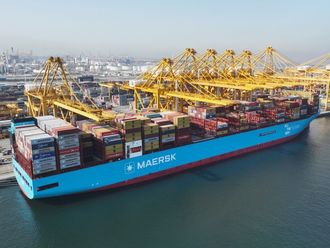London: Asian credit markets are expanding at a record pace, attracting growing numbers of both international and local institutional investors.
New corporate issuance is expected to rise to near $150 billion (Dh550.9 billion) this year, from $120 billion in 2013. Yields on offer appear generous compared with other fixed income markets. Bond-buying programmes by leading central banks have squeezed yields and spreads elsewhere to historically low levels.
David Bessey, head of the emerging markets debt team at Pramerica Fixed Income, says the large scale of Asian corporate bond issuance has meant that the tightening in credit spreads has lagged behind developed markets, providing relative value opportunities for managers running global and multi-sector funds.
Raja Mukherji, head of Asian credit research at Pimco, the world’s largest bond house, adds that many US and global investors remain underinvested in Asia and want to add exposure.
“Local investors, especially insurance companies, pension funds and sovereign wealth funds, are increasingly participating in new issues,” he says.
Rajeev De Mello, head of Asian fixed income at Schroders, the investment manager, agrees. He has seen strong interest from US investors in investment-grade credit across Asia, with clients showing a stronger appetite for risk than in previous years.
De Mello adds that Asian local-currency bonds provide a distinct yield advantage over US Treasuries, pointing out there is better value in those markets where interest rates have already increased, such as China, India and Indonesia.
But he cautions that some other Asian credit markets now look “frothy”.
Indeed, yields are described as low in export-orientated Asian countries such as Taiwan, South Korea and Thailand, although there are selective pockets of value elsewhere for tactical investors.
Robert Stewart, head of Asian fixed income product and distribution strategies at JPMorgan Asset Management, says: “Indonesia is attracting a lot of interest from global fixed income investors anticipating that Joko Widodo will pursue a reform agenda after his recent election as president.”
Indonesia recently sold €1 billion (Dh4.93 billion) of seven-year euro bonds offering 2.98 per cent in an auction that attracted bids worth €6.7 billion.
Bessey says he expects to see more spread tightening for Indonesian corporate and quasi-sovereign issuers, as investors were reluctant to commit ahead of the presidential vote.
In India, Bessey says Pramerica hopes that the new Modi government will pursue a more orthodox fiscal approach than its predecessors. Pramerica currently owns some dollar-denominated corporate and quasi-sovereign bonds whose spreads have tightened recently
The Modi government has a “unique mandate” after winning a large election majority, adds De Mello. He says India’s central bank has also appointed a “very credible” governor, Raghuram Rajan, who is determined to bring inflation down to sustainable levels, an important commitment for building confidence among bond investors.
However, Indonesia and India play less influential roles in Asian credit markets than China.
The Chinese corporate bond market is now the world’s largest. Non-financial debt is expected to grow from around $14.2 trillion at the end of 2013 to $20 trillion over the next four years, according to Aberdeen Asset Management.
But Aberdeen warns that a third of Chinese debt is sourced from the informal shadow banking sector while signs of stress continue in the country’s property markets.
Mr Bessey is also cautious about bond issuance by Chinese property companies even though these offer relatively high yields, pointing out that property sales were disappointing in the first half of 2014 and that prices remain under pressure.
But the sense is clients in Asia see China’s credit markets as “an exciting area” as Beijing gradually liberalises capital flows through extensions to its RQFII and QFII schemes.
Stewart says: “We are also starting to see interest from other [non-Asian] international investors in onshore Chinese corporate bonds, which look relatively attractive in the current low-yield environment.”
Mukherji thinks weakness in China’s property market has had a broader effect on Asian high-yield bonds, leading to a widening in the gap versus high-yield bonds in the US and Asia.
He warns that Asian high-yield spreads could widen further from current levels and says “caution is warranted”.
In contrast the gap between investment-grade bond yields in Asia and the US and Europe has remained relatively stable since the middle of 2013. As a result, Pimco’s analysis leads it to prefer investment-grade new issues along with “select opportunities” among state-owned Asian energy and utility companies.












